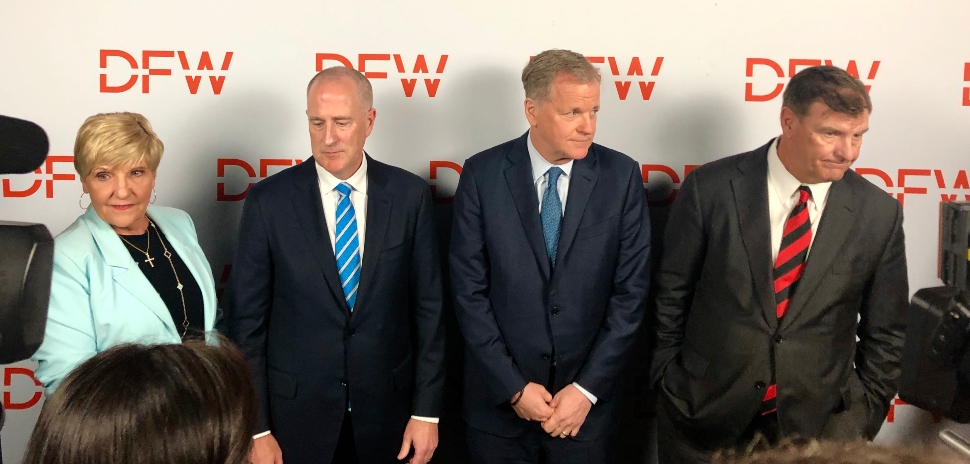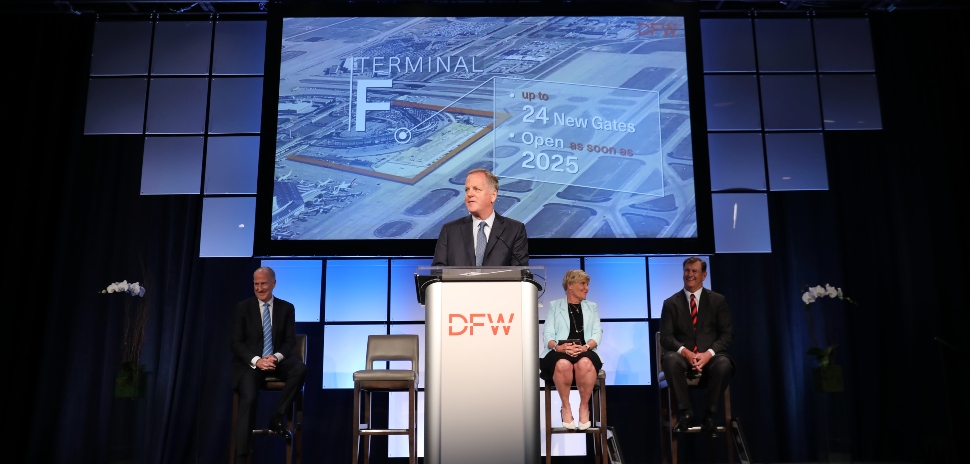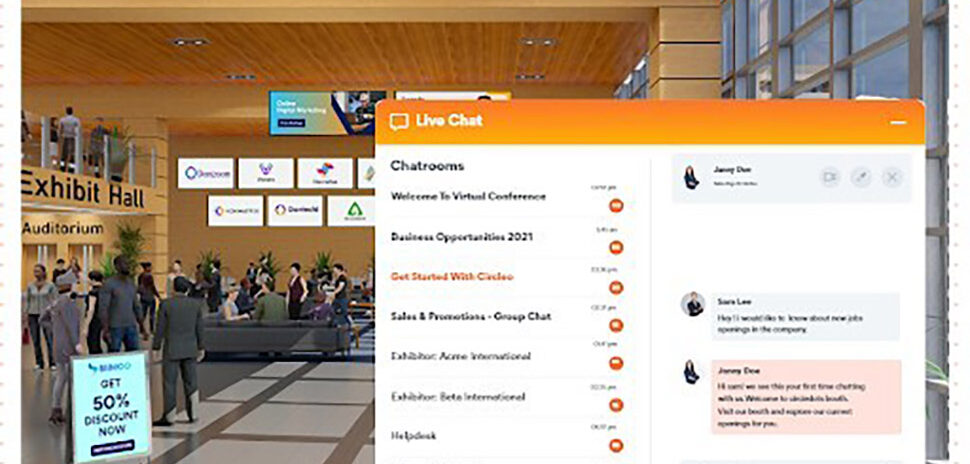Dallas Fort Worth International Airport is lauded as an economic engine in North Texas. Its central location and nonstop access to 250 destinations make it an important part of the region’s ecosystem.
The nearly 50-year-old airport faces challenges and celebrates successes like any other. But, to remain relevant and useful, it must innovate and grow in meeting the needs of both passengers and airlines.
And grow it will. Sean Donohue, the airport’s CEO, announced Monday at the annual State of the Airport address that there are plans to construct a sixth terminal (Terminal F) and renovate Terminal C—to the tune of $3-3.5 billion—by 2025.
Fast Facts
• DFW was named the 2019 Airport of the Year by Air Transport World
• It’s rated No. 1 in customer satisfaction in North America
• It’s the first carbon neutral airport in North America, and it’s the largest carbon neutral airport in the world
• It’s No. 4 in global flights and No. 15 in global passengers by 2018 data
• It services 62 international destinations and 118 domestic destinations
• Its estimated yearly economic impact in North Texas is $37B
The expansion and renovation is supported by American Airlines. Donohue says it’s expected to be financed by bonds and repaid through airline rates and charges over the life of the bonds. The new terminal is projected to add up to 24 additional gates at the airport.
“The plans we’re announcing today will allow for the continued growth of the airport and ensure the airport remains a premier gateway for American for many more years to com,” American Airlines CEO Doug Parker says. “We’re incredibly excited about American’s future at DFW, and look forward to continuing our partnership.”
Dallas Mayor Mike Rawlings says American Airlines’ dedication to the airport speaks to the region’s position as an innovation powerhouse.
“To have a partner like American Airlines that believes in this region—that believes in this airport—says that the growth cycle of this town is going to continue to grow,” he says. “They don’t bet that money easily, and they do it because of the leadership in this board, and these providers, these partners, these employees. It’s the same sort of passion that made us global airport of the year.”
While a new expansion allows room for the airport to grow and provides service to more passengers, the airport’s existing terminals must also evolve to keep up with demand and industry trends.
The development of new technologies, paired with the addition of an internal innovation team, allows the airport to serve customers in new ways.
“A couple of early innovative projects are paying dividends for our customers,” Donohue says. “We have installed dynamic glass in Terminal A. This technology automatically tints windows, reducing heating, saving air conditioning loads, and creating more comfortable gate rooms for our passengers.”
READ NEXT Project Runway: New Innovation Officer Tackles Travel Roadblocks at Dallas Fort Worth Airport
Advancements like these, he says, are also beneficial for the airport: “We also installed dynamic glass in a bar and saw our sales double.”
Installations like the dynamic windows are not only good for travelers—they’re also good for the earth, as they decrease the workload on air conditioning and heating systems. Dallas Fort Worth Airport is the first carbon neutral airport in North America, and the largest in the world.
“We are the first airport outside of California to invest in renewable natural gas,” Donohue says. “Last year, 35 percent of our bus fleet’s consumption was from renewable natural gas. Again, good business, as we recognize over a half a million dollars in savings on this initiative.”
The airport also relies heavily on wind-power energy, Donohue says.
“The primary metric for airport carbon performance is energy consumption, and 100 percent of our electricity purchases at DFW Airport are wind power. Since 2010, we have seen an 83 percent reduction in carbon emissions per passenger,” he says. “We have seen our electricity costs dropped by almost one-third, saving the airport over $20 million.”

Left to right: Betsy Price, Sean Donohue, Doug Parker, Mike Rawlings. [Image: Payton Potter]
As any traveler knows, transgressing airport security can be an arduous task. So, DFW is innovating there, too. Donohue says new AI-driven technology is helping monitor congestion at TSA checkpoints and allowing travelers to plan ahead.
“All 16 of our checkpoints will have this technology installed by summer. And, soon, customers will be able to access this information before they even leave for the airport,” he says.
The new displays bear information like security wait time and estimated walking time to checkpoints in adjacent terminals.
The technology uses 3D Optical Sensors, which use heat and movement to measure how many people are in line and how quickly they’re moving. Soon, the data will be available to customers through DFW’s app and website, Donohue says.
The airport is working also on expanding its access to innovative mobility options, from Uber Elevate aircraft to the possible creation of a Hyperloop.
“One of the questions we’re asking is: ‘Will we ever need to build another parking garage at this airport?'” Donohue says. Developments in technology, he explains, shape the way the airport is constructed going forward.
Fort Worth Mayor Betsy Price says the expansion aligns with the airport’s dedication to innovation.
“As we look forward to great innovation to come that will serve each and every one of us. I’m anxious to see as the demands of the traveling public and the aviation industry change, just how creative and innovative that can be at Terminal F,” Price says. “We’re confident it will be the best terminal anywhere, [will] and serve this airport for the next 45 to 50 years.”
![]()
Get on the list.
Dallas Innovates, every day.
Sign up to keep your eye on what’s new and next in Dallas-Fort Worth, every day.































